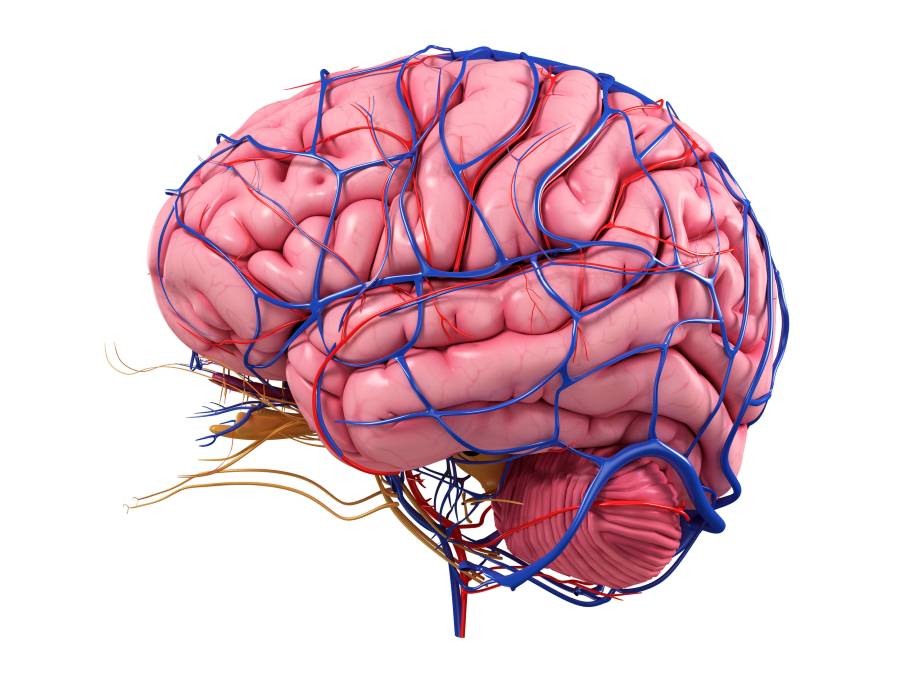Measuring blood flow in the brain is critical for understanding response to a range of neurological problems, including stroke, traumatic brain injury (TBI) and vascular dementia. Obtaining such measurements noninvasively, however, remains a challenge. And existing techniques, including magnetic resonance imaging and computed tomography, are expensive and not widely available.
Researchers headed by teams at the USC Neurorestoration Center, University of Southern California, and at California Institute of Technology (Caltech) have built a simple, noninvasive alternative, based on a technique known as speckle contrast optical spectroscopy (SCOS), which is currently used in animal studies, and has been adapted for potential clinical use in humans.
The technique works by capturing images of scattered laser light with an affordable, high-resolution camera. “It’s really that simple,” said Charles Liu, MD, PhD, professor of clinical neurological surgery, urology and surgery at the Keck School of Medicine of USC, director of the USC Neurorestoration Center. “Tiny blood cells pass through a laser beam, and the way the light scatters allows us to measure blood flow and volume in the brain.”
The approach has previously been tested with humans in small proof of concept studies that demonstrated its utility in assessing stroke risk and detecting brain injury. In a study now reported in APL Bioengineering (“Assessing Human Scalp and Brain Blood Flow Sensitivities via Superficial Temporal Artery Occlusion Using Speckle Contrast Optical Spectroscopy,”) co-senior author Liu and colleagues confirmed that SCOS is truly measuring blood flow in the brain, rather than in the scalp, which also contains many blood vessels. The question has long plagued researchers who use light-based technology to visualize the brain.
Monitoring cerebral blood flow dynamics is crucial for understanding brain health, diagnosing neurological conditions such as stroke and structural brain injury, and developing effective treatments, the authors wrote. The scalp and skull not only obstruct viewing the brain directly but also have their own blood supply, further complicating cerebral blood flow measurements. “Non-invasively measuring cerebral blood dynamics is challenging due to the scalp and skull, which obstruct direct brain access and contain their own blood dynamics that must be isolated,” the team continued.
For years, researchers measuring brain signals with light-based technology, such as lasers and fiber optics, have used statistical simulations to estimate which signals originate in the brain versus the scalp. “Despite its potential, demonstrating that SCOS and other optical imaging techniques can effectively probe brain signals over scalp and skull layers was an unresolved matter,” the authors wrote. “While numerous numerical studies have assessed the depth sensitivity of optical methods, to the best of our knowledge, no experimental validation of the depth sensitivity has yet been achieved.”
The team has now found a direct way to test the difference, thanks to the collaboration between surgeons, engineers, and neurologists. Their study marks the first time that the SCOS technology has been configured to tune out noise from blood flow to the scalp, allowing them to verify that the SCOS readings were measuring signals from blood vessels in the brain, and not from the scalp itself.
The device itself is housed in a headband running across the forehead, and contains a light source and seven detectors arranged in increasing distance from the artery. Closer detectors pick up shallower optical data, such as signals from the scalp, while ones with a greater distance receive a deeper and broader set of signals.
“I perform surgeries to increase blood flow in the brain, and many of these involve temporarily stopping blood flow in the scalp,” said co-author Jonathan Russin, MD, now professor and chief of neurosurgery at the University of Vermont, who continues to collaborate with the USC Neurorestoration Center. “That gave us a simple way to test the technology—by creating a change that affected only the scalp’s circulation while leaving the brain’s blood flow untouched.”
In a study involving 20 participants, the team confirmed that temporarily blocking the superficial temporal artery—a blood vessel that originates near the ear and provides blood flow to the front of the scalp—significantly diminished the signals from the shallower channels corresponding to the scalp but didn’t change the signals from deeper channels. They did this by gently pressing down on the patients’ superficial temporal artery for a few seconds and measuring signals.
“By briefly occluding the superficial temporal artery, which supplies blood only to the scalp, we isolated surface blood dynamics from brain signals,” they reported. “Results on 20 subjects show that scalp-sensitive channels experienced significant reductions in blood dynamics during occlusion, while brain-sensitive channels experienced minimal changes.”
By gradually moving the detector further from the head, they captured signals reaching progressively deeper towards the brain. They found that positioning the detector 2.3 centimeters from the head allowed them to measure brain blood flow while minimizing interference from the scalp.
The findings confirm the utility of SCOS for non-invasively detecting brain blood flow and provide important guidance for other researchers working with light-based technology, Liu said. Identifying which signals are closer to the skin’s surface, the group’s device can delineate which parts of the deeper signals correspond to blood flow in the brain.
“Some individuals have thicker scalp or skull layers, while others have thinner ones,” said co-author Simon Mahler, PhD. “This variability makes it difficult to design a single device that can be easily used across a large cohort of participants and means that results can vary between individuals.”
In their paper, the team concluded that their results provide “… experimental evidence of scalp blood flow sensitivity in diffuse optical measurements such as speckle contrast optical spectroscopy (SCOS), highlighting optimal configuration for preferentially probing brain signals non-invasively.”
Added Mahler, who is now an assistant professor in the department of biomedical engineering at the Stevens Institute of Technology. “For the first time in humans, this experimental evidence shows that a laser speckle optical device can probe beyond the scalp layers to access cerebral signals,” added Mahler, “This is an important step toward using SCOS to non-invasively measure blood flow in the brain.”
Beyond advancing research, the study helps confirm the clinical potential of SCOS for detecting and responding to stroke, brain injury and dementia. Because all of the team’s research has been done with humans, the tool is poised for rapid translation from the lab to the clinic. “We look directly at humans in essentially the same way the tool will be applied, so there’s nothing lost in translation,” Liu said. “We are never more than one step away from the problem we’re trying to solve.”
The technique is already being used by some of the team’s collaborators to help diagnose stroke and TBI. Next, the researchers will continue to refine the technology and software, working to improve the resolution of images and the quality of data extracted from readings.
“With the knowledge that we’re now measuring exactly what we intend to measure, we’re also going to expand our testing of this technique with patients in clinical settings,” Liu said. And in their paper the team further commented, “Our method offers a practical and subject-friendly alternative for evaluating depth sensitivity and complements more advanced, hardware-intensive strategies such as time-domain gating.”




